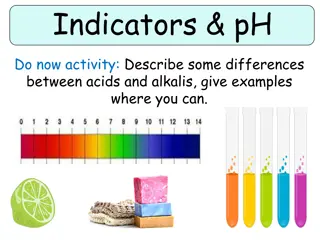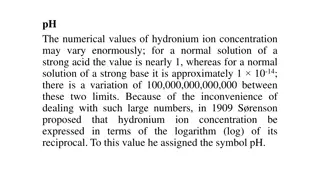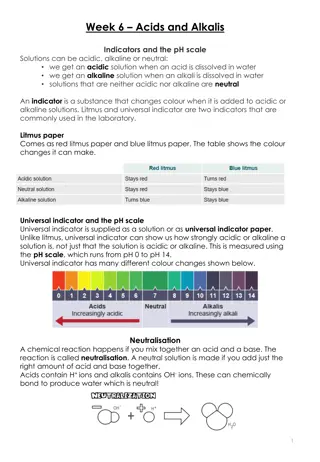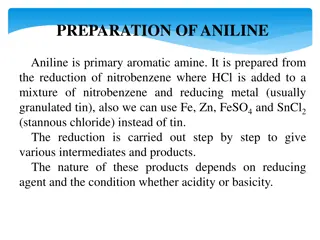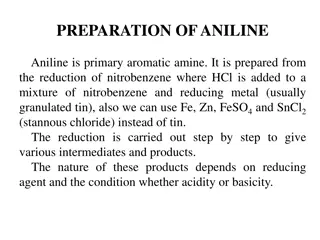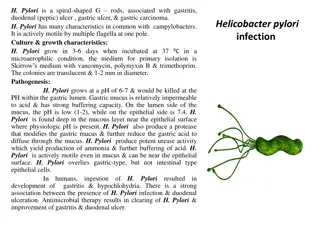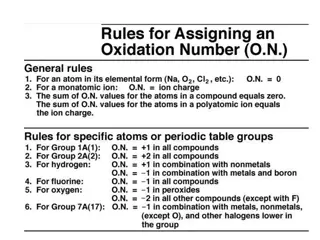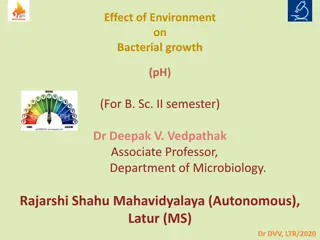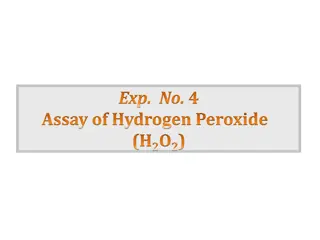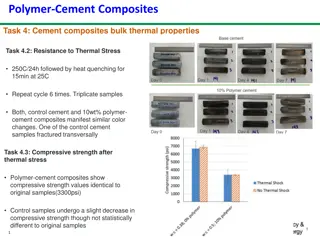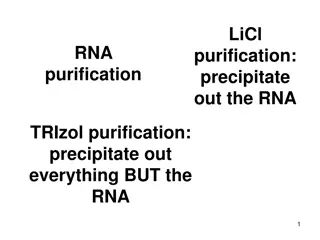Aldol Condensation Reaction: Preparation of Chalcones
Chalcones are important unsaturated aromatic ketones that serve as biogenetic precursors of flavonoids and isoflavonoids. They have various medicinal and pharmaceutical applications due to their biological activities. Chalcones are easily synthesized compounds with potential therapeutic uses, making
2 views • 13 slides
Understanding the Seliwanoff Color Reaction and its Significance
The Seliwanoff color reaction, discovered by Russian chemist Feodor Feodorovich Selivanov, is used to differentiate between aldoses and ketohexoses based on their dehydration and reaction with resorcinol in acidic conditions. Ketoses like fructose react faster than aldoses like glucose, leading to a
3 views • 20 slides
Dialysis Market - Global Opportunity Analysis and Industry Forecast (2024-2031)
Dialysis Market by Product (Haemodialysis [Dialyzers, Bloodlines, Dialysates {Alkaline, Acidic}, CVC, AV Fistula, AV Graft] Peritoneal Dialysis [Conventional, Nocturnal]), End User (Hospital, Homecare, Dialysis Center) - Global Forecast to 2031\n
6 views • 5 slides
Understanding Acids and Alkalis: pH Scale and Indicators
Explore the differences between acids and alkalis, learn about indicators, pH scale, and how to categorize solutions as acidic, alkaline, or neutral. Understand the importance of universal indicators in determining acid and alkali strength. Discover the disadvantages of using red and blue litmus pap
3 views • 11 slides
Understanding Ocean Acidification: Impact on Coral Reefs
Ocean acidification is the process where oceans become more acidic due to excessive carbon dioxide absorption. Human activities like deforestation and vehicle emissions contribute to this phenomenon. Coral reefs are crucial as many ocean species rely on them for survival. The pH scale measures acidi
0 views • 18 slides
Understanding Enveloped and Non-enveloped DNA Viruses
Non-enveloped DNA viruses, surrounded by a protein capsid, are resistant to sterilization and thrive in acidic environments. Adenoviruses, a common non-enveloped type, spread through close contact and contaminated objects. Additionally, Papilloma and Polyoma viruses, causing persistent infections an
0 views • 23 slides
Understanding Non-Aqueous Solvents: Types and Classification
Inorganic non-aqueous solvents play a crucial role in chemical research and industry. This article by Dr. Princy K.G. delves into the classification of solvents based on protonicity, polarity, and aqueous vs. non-aqueous nature. It explores the types of non-aqueous solvents, such as protonic and non
1 views • 29 slides
Exploring pH Levels in Common Drinks
This activity aims to compare the acidity levels of fizzy drinks and alcoholic beverages by measuring their pH using a SensorLab pH sensor. Students are introduced to the concept of acidity, the pH scale, and the importance of pH in determining whether a substance is acidic or alkaline. Theoretical
0 views • 22 slides
Understanding pH Scale and Hydronium Ion Concentration
The pH scale is a logarithmic measurement that indicates the acidity or alkalinity of a solution based on the concentration of hydronium ions. pH values range from 0 to 14, with 7 being neutral. Lower pH values indicate acidity, while higher values indicate alkalinity. This scale provides a convenie
0 views • 104 slides
Exploring the Thermophilic Organisms: Thermoplasma Genus
The Thermoplasma genus belongs to Archaea and thrives in acidic, high-temperature environments. These prokaryotic organisms lack a defined nucleus and utilize sulfur and organic carbon for respiration. They possess a unique membrane composition, allowing them to survive in extreme conditions. Specie
0 views • 12 slides
Understanding Electrochemical Processes in Materials Engineering
Electrochemical processes play a crucial role in materials engineering, specifically in the context of corrosion. These processes involve both oxidation (anodic reaction) and reduction (cathodic reaction) reactions occurring simultaneously. Maintaining a balance between these reactions is essential
3 views • 22 slides
Overview of Group 16 P-Block Elements
Group 16 P-Block Elements, also known as Group VIA or Chalcogens, include oxygen, sulfur, selenium, tellurium, and polonium. These elements exhibit varying properties from non-metallic to semi-metallic to metallic. The group shows a general trend of increasing metallic properties down the group, alo
0 views • 26 slides
Understanding Host Defense Mechanisms Against Infection
Host defense mechanisms safeguard the body from pathogens through various strategies such as intact skin, mucous membranes, nonspecific immune responses like phagocytic cells, and specific immune responses involving antibodies and lymphocytes. Key protective barriers include the skin, eyes, digestiv
3 views • 16 slides
Benzidine Rearrangement: Mechanism and Substituent Effects
Benzidine rearrangement involves the conversion of hydrazobenzenes into a mixture of benzidine and diphenylene under acidic conditions. Various substituents influence the product formation, with o-/m- positions favoring benzidines, and p- positions leading to different products based on the nature o
0 views • 15 slides
Understanding Acids, Alkalis, Indicators, and the pH Scale
Solutions can be acidic, alkaline, or neutral depending on whether an acid or alkali is dissolved in water. Indicators like litmus and universal indicator help determine acidity or alkalinity. The pH scale measures this, with 7 being neutral. Neutralization reactions occur when an acid and a base re
0 views • 5 slides
Preparation of Aniline from Nitrobenzene Reduction
Aniline, a primary aromatic amine, is prepared through the reduction of nitrobenzene using a mixture of nitrobenzene and a reducing metal (such as tin). Various intermediates and products are obtained depending on the reducing agent and conditions. Aniline is initially obtained as a salt form and is
0 views • 10 slides
Preparation of Aniline: Aromatic Amine Synthesis from Nitrobenzene
Aniline, a primary aromatic amine, is synthesized from nitrobenzene through a stepwise reduction process using various reducing agents. The addition of HCl to nitrobenzene with a reducing metal like tin yields aniline chloride. Subsequent treatment with NaOH liberates the free amine through steam di
0 views • 10 slides
Helicobacter Pylori: Characteristics, Pathogenesis, and Diagnosis
Helicobacter pylori is a spiral-shaped Gram-negative bacterium associated with various gastrointestinal conditions like gastritis, duodenal ulcers, gastric ulcers, and gastric carcinoma. It exhibits unique characteristics in common with Campylobacters and has specific culture and growth requirements
0 views • 5 slides
Understanding Soil Profiles in Agricultural Science
Soil profiles are essential for classifying soils, with main profiles being Brown Earth, Podzol, and Gley. It's crucial to draw these profiles accurately for exams, considering horizons like O Horizon, A Horizon, B Horizon, and Bedrock. Brown Earth has a thick O horizon with uniform brown color, Pod
1 views • 8 slides
Understanding Redox Reactivity and Balancing Equations in Acidic Solutions
Exploring the concept of reactivity in redox reactions using zinc, nickel, and copper, followed by a detailed guide on balancing redox equations in acidic solutions. Learn how to determine oxidation numbers, identify redox atoms, balance charges, and handle oxygen and hydrogen atoms to achieve balan
0 views • 18 slides
Comprehensive Guide to Highbush Cranberry (Viburnum trilobum)
Highbush Cranberry, known scientifically as Viburnum trilobum, is a deciduous shrub that grows up to 12 feet tall. It features dark green leaves in summer and maroon foliage in fall, white flowers, and bright red or orange fruits that persist through winter. This plant thrives in moist and slightly
0 views • 7 slides
Disposable Glucose Nanosensor Development Project
This project aims to develop a disposable glucose nanosensor and testing method to detect a range of concentrations. The goal is to create a low-cost and easy-to-fabricate nanosensor by designing an effective fabrication process. Steps involve cleaning the microscope slide, depositing titanium and a
0 views • 14 slides
Sustainable Processing of Bauxite Residue for Environmental Benefits
Sustainable Materials Processing Laboratory at the University of Toronto is focusing on innovative ways to neutralize acidic soil, treat mining wastes, and recover metals using bauxite residue. The research also delves into the properties of hot metal and steel, emphasizing steelmaking processes for
0 views • 22 slides
The Art of Pickling: History, Types, and Techniques
Pickling is a traditional food preservation method involving fermentation in brine or marination in acidic solutions. With origins dating back 4000 years to India, pickling has evolved to include various types like brined dill pickles, relishes, and fruit pickles. This article explores the history,
0 views • 18 slides
Exploring the pH Levels of Common Drinks
This experiment focuses on comparing the pH levels of fizzy drinks and alcoholic beverages by formulating and testing hypotheses using a Labdisc pH sensor. The introduction explains acidity, heartburn, and the concept of pH, while the theory introduces the pH scale and examples of acidic and alkalin
0 views • 22 slides
Debunking Common Myths About Cancer and Nutrition
The journey of cancer diagnosis brings forth various challenges, including misconceptions about nutrition. Debunking myths like soy stimulating cancer cells, sugar feeding cancer, and acidic diets curing cancer is crucial for informed decision-making. Evidence shows that soy can be a part of a healt
1 views • 11 slides
Understanding Common Women's Health Issues Related to STIs
Women's presentations at STI clinics can be either physiological or pathological, often associated with common STIs. The physiology of the vulvovaginal area serves as the first line of defense against infections, and the maintenance of a healthy microbiota plays a crucial role in vulvovaginal health
0 views • 99 slides
pH Effects on Bacterial Growth: The Influence of Environment
This study explores the impact of pH levels on bacterial growth, highlighting the minimum, optimum, and maximum pH requirements for different categories of microbes - acidophiles, neutrophiles, and alkaliphiles. It delves into the consequences of pH variations on cellular processes like DNA stabilit
0 views • 8 slides
Assay of Hydrogen Peroxide (H2O2) - Experimental Study
Hydrogen peroxide (H2O2) is a weak acid with both oxidant and reductant properties. It is an unstable compound that decomposes into oxygen and water. This experiment involves titrating hydrogen peroxide against a standard oxidizing agent solution to determine its concentration. The physical and chem
0 views • 9 slides
Understanding Solution Concentration and pH Calculations
Explore the concepts of solution concentration, specifically molarity calculations, and pH measurements related to the power of the Hydronium ion. Learn how to calculate molarity, determine the Hydrogen/Hydronium ion concentration, and understand the pH scale from acidic to basic. Practice sample pr
0 views • 13 slides
Understanding Acids and Bases: A Comprehensive Overview
Learn about the fundamental concepts of acids and bases, their classifications, and key theories by Arrhenius and Brønsted-Lowry. Explore the importance of pH balance in living organisms and how different substances exhibit acidic or basic properties through informative visuals.
0 views • 34 slides
Grignard Reaction in Chemistry Lab: Part 1 Overview
The Grignard Reaction Part 1 in Chemistry 318 Fall 2018 involves the preparation of the Grignard reagent, its reaction with CO2, and the isolation of the benzoic acid product. The experiment spans two lab sessions, focusing on safety precautions, pre-lab checks, and upcoming due dates. Students are
0 views • 11 slides
Understanding pH Scale and Acidic Substances
Explore the pH scale and identify acidic substances by placing them correctly. Understand the acidity levels of common substances like water, orange juice, stomach acid, baking soda, and drain opener. Test your knowledge with interactive images depicting pH levels.
0 views • 8 slides
Understanding Analytical Chemistry Concepts and Applications
In the realm of analytical chemistry, various methods are employed to detect acids and bases in solutions. Litmus, a natural dye, is commonly utilized for this purpose, turning red in acidic conditions and blue in basic conditions. The slides presented touch upon key concepts such as the Arrhenius d
0 views • 47 slides
Study on the Thermal and Chemical Properties of Polymer-Cement Composites
The study investigates the resistance of polymer-cement composites to thermal stress and chemical attacks such as acidic and high CO2 environments. Results show similar color changes in control cement and polymer-cement composites after thermal stress, with the latter maintaining compressive strengt
0 views • 5 slides
Sustainable Batteries for Underdeveloped Regions
Engineers Rebecca, Lexi, and Sally are working on creating sustainable batteries using local coins and fruits to help underdeveloped nations. Their mission is to design efficient batteries that require acidic solutions, reduce hazardous waste, and can power a small light bulb for 15 minutes. The tea
0 views • 17 slides
Understanding Salt Hydrolysis in Chemistry
Salt hydrolysis is a chemical process in which a salt reacts with water to produce an acid and a base. This reaction occurs when the cation or anion of the salt interacts with water, resulting in either an acidic or basic solution. The type of hydrolysis depends on the strength of the acid and base
0 views • 6 slides
Understanding Mixtures: Types and Examples
A mixture is a combination of different ingredients that can be separated. There are various types of mixtures such as liquid solutions, solid solutions, and gas solutions. Liquid solutions involve solid substances dissolved in a liquid, like sugar in water, while solid solutions include metal alloy
0 views • 15 slides
Methods for RNA Purification and Separation from DNA
Selective precipitation of RNA using Lithium Chloride (LiCl) and extraction with phenol at acidic pH are two common methods for separating RNA from DNA. LiCl forms a complex with RNA facilitating its precipitation, while acidic phenol solution helps stabilize RNA at pH 4-5 for extraction. TRIzol var
0 views • 7 slides
Understanding Acid-Base Chemistry Principles
Acid-base chemistry involves the autoionization of water, pH calculations using the ion product constant for water (Kw), and the categorization of solutions as neutral, acidic, or basic based on the concentrations of hydronium and hydroxide ions. Definitions of acids and bases, conjugate acid-base p
0 views • 31 slides



